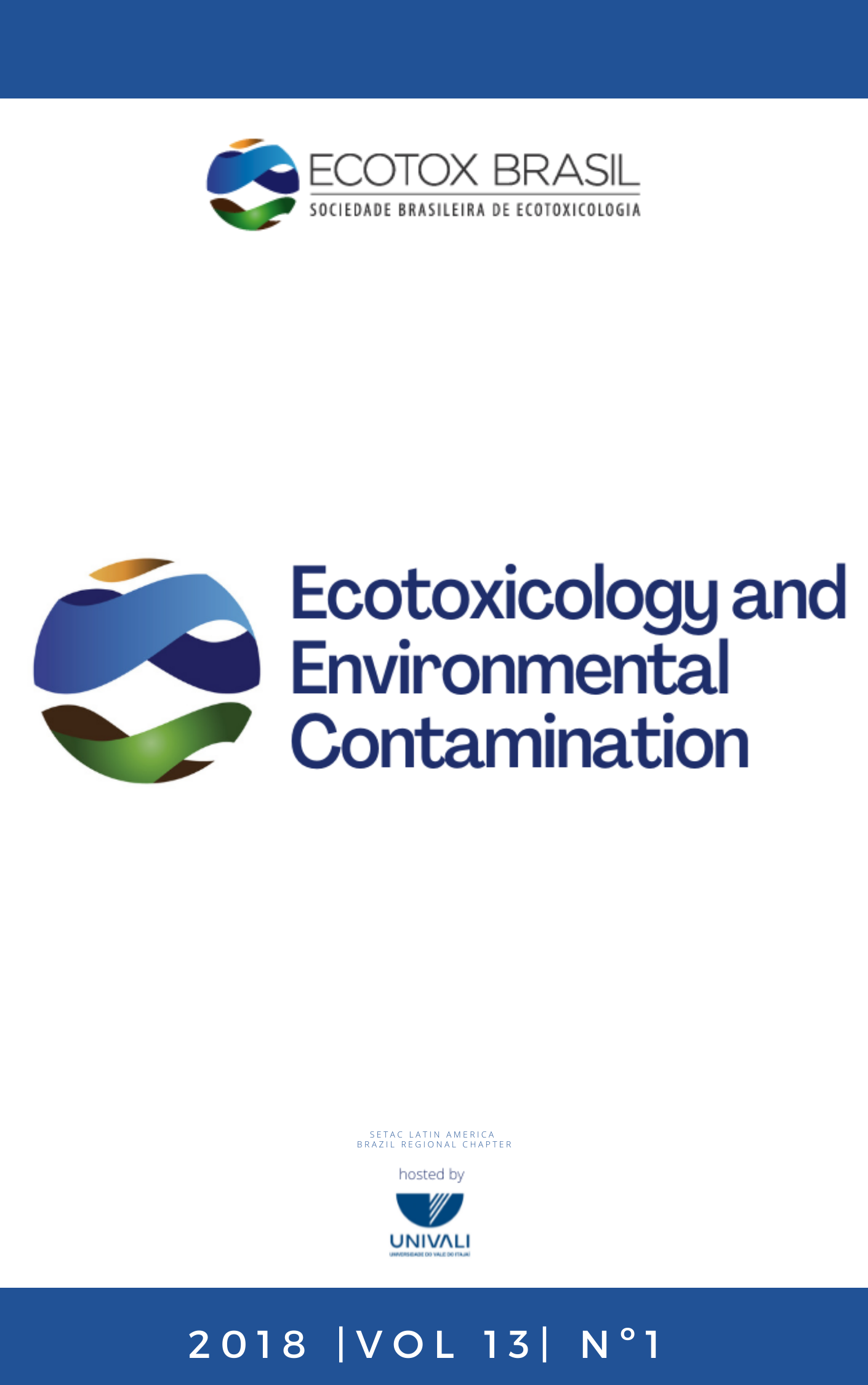Estrogenicity and cytotoxicity of sediments and water from the drinkwater source-basin of Montevideo city, Uruguay
DOI:
https://doi.org/10.5132/eec.2018.01.02Abstract
Frequently new pollutants are released into the environment, demanding the employment of generic methods to detect toxic responses. In vitro bioassays such as the yeast estrogenicity screening (YES) allow detecting estrogenic and citotoxic compounds avoiding the employment of invasive methods. We determined the cytotoxicity and estrogenic activity in sediments of the Santa Lucia River Basin (Uruguay) using YES assay and the association with land uses and parameters of water quality and sediment. Water quality parameters confirm the eutrophication process of the Santa Lucía River, which was mainly reflected by high levels of TP and ammonium. High values of estrogenic activity in sediments (E2-EQ 8.49 ng g-1 of sediment) were found mainly in urbanized and cultivated areas. However, estrogenicity and cytotoxicity also was found in sites associated with other land uses such as rangelands. These data provide evidence that Santa Lucía River basin contains a variety of chemicals (including estrogenic and toxic chemicals of unknown and potentially diverse sources) that should be investigated further.YES assay proved to be a useful tool for characterizing estrogenic responses, and due to the human and ecological health importance, we suggest the employment of these kinds of bioassays as tools for environmental monitoring of EDCs substances.Downloads
Published
How to Cite
Issue
Section
License
Copyright © 2006 ECOTOX-Brasil
Copyright notice: It is a condition for publication that manuscripts submitted to this journal have not yet been published and will not be simultaneously submitted or published elsewhere. By submitting a manuscript, the authors agree that copyright for their article is transferred to the Sociedade Brasileira de Ecotoxicologia (ECOTOX-Brasil) if and when the article is accepted for publication. The copyright covers the exclusive rights to reproduce and distribute articles, including reprints, photographic reproductions or any other reproduction of a similar nature, including translations. No part of this publication may be reproduced, stored in a retrieval system or transmitted in any form or by any means, electronic, mechanical, photocopying, recording or otherwise, without permission of the publisher.
Notice: While every effort is made by the EEC, editors and editorial board to see that no inaccurate or misleading data, opinions or statements appear in this journal, they wish to make it clear that the contents of the articles and advertisements published herein are the sole responsibility of the contributors or advertisers concerned. Accordingly, the EEC, the editorial board and editors and their respective employees, officers and agents accept no responsibility or liability whatsoever for the consequences of any inaccurate or misleading data, opinion or statement.




